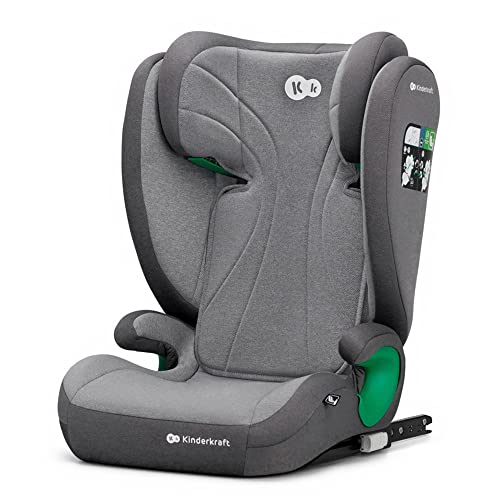10 Books To Read On Pram Vs Pushchair
페이지 정보
작성자 Jann 작성일25-09-09 02:16 조회48회 댓글0건본문
Pram vs. Pushchair: Understanding the Key Differences
When it concerns carrying infants and young kids, parents typically find themselves overwhelmed by the numerous options offered. Amongst these options, prams and pushchairs are 2 of the most typical types of baby transport. While the terms are typically used interchangeably, each has unique features and benefits that deal with diverse parenting needs. In this post, we will check out the basic distinctions in between prams for sale and pushchairs shop, assisting moms and dads make informed decisions about which is best matched for their family.
What is a Pram?
A pram, or perambulator, is a type of baby carriage created primarily for newborns and babies. Prams usually include a completely flat lying position, which is essential for newborns who require to lie flat for spine development. Most prams come geared up with a deep, enclosed body that offers a comfortable and protected environment for the baby, typically with additional functions such as hoods or covers to shield them from the components.
Secret Characteristics of Prams:
- Flat Lying Position: Supports healthy back advancement in newborns.
- Enclosed Design: Protects the baby from wind and sunshine.
- Traditional Aesthetic: Often made from products like wicker or material, giving a classic look.
- Weight and Bulkiness: Generally much heavier and bulkier than pushchairs.
What is a Pushchair?
A pushchair, likewise understood as a stroller or buggy, is developed for older infants and toddlers who can sit up unassisted. Pushchairs permit numerous seating positions, consisting of reclining alternatives for naptime. They are normally lighter and more agile than prams, allowing parents to navigate busy locations with ease. Numerous pushchairs feature adjustable handles, storage compartments, and can often be folded for practical transport.
Key Characteristics of Pushchairs:
- Seating Position: Designed for kids who can sit up, with numerous reclining positions.
- Lightweight and Compact: Easier to maneuver and transportation.
- Adaptability: Many models are convertibles or can accommodate safety seat.
- Storage Features: Often include baskets for bring diaper bags, toys, and so on.
Secret Differences Between Prams and Pushchairs
Below is a relative table highlighting the important differences between prams and pushchairs.
| Feature | Pram | Pushchair |
|---|---|---|
| Target Age | Newborns to 6 months (flat position required) | 6 months to toddler age (sitting unassisted) |
| Design | Enclosed, traditional style | Open, contemporary style |
| Weight | Heavier, bulkier | Lighter, more compact |
| Seating Options | Flat just | Several positions consisting of reclining |
| Manoeuvrability | Less maneuverable due to weight | Extremely maneuverable |
| Storage Space | Restricted | Generous underneath baskets |
Selecting Between a Pram and a Pushchair
Factor to consider Factors:
- Age of the Child: Choose a pram for newborns and a pushchair for older infants and young children.
- Planned Use: If you prepare to do a great deal of walking or navigating city streets, consider a model that matches your lifestyle.
- Area: Assess the readily available storage in your house or automobile and how compactly a design can fold.
- Budget plan: Consider the price range, as prams and cheap pushchairs can differ commonly in expense.
- Features: Look for extra features that may be helpful for your day-to-day life, such as cup holders, canopies, or easy folding systems.
Benefits and Disadvantages
Advantages of Prams
- Suitable for Newborns: Encourages healthy spine advancement.
- Comfortable Space: Provides a relaxing environment for infants.
Downsides of Prams
- Weight: Heavier and bulkier, making them less practical for daily usage.
- Restricted Use Time: Generally helpful only for the very first 6 months.
Advantages of Pushchairs
- Adaptability: Suitable for longer durations as the kid grows.
- Lightweight Design: Easier to bring and steer.
Disadvantages of Pushchairs
- Not Suitable for Newborns: Requires the child to be able to stay up unassisted.
- Less Protective: Generally more exposed than a pram.
Regularly Asked Questions (FAQs)
1. Can I utilize a pushchair for a newborn?
The majority of pushchairs are not designed for newborns; nevertheless, numerous models come with infant safety seat adapters. Some pushchairs offer a fully reclining seat option that may be ideal for babies, but guarantee the manufacturer verifies it's safe.
2. Which is better for travel?
Pushchairs are normally preferred for travel due to their lightweight and compact nature. They can frequently be folded quickly for transport on public transport and fit more readily in cars and truck trunks.

3. The length of time can I utilize a pram?
prams double are usually suitable for babies till they reach around 6 months of age or when they can support themselves in a seated position.
4. Exist hybrid designs readily available?
Yes, many makers produce hybrid models that can be converted from a pram to a pushchair depending on the child's advancement stage.
5. What should I try to find when buying a pram or pushchair?
When acquiring, consider safety features, ease of use, durability, weight, and storage. It's also advisable to check various models for comfort before deciding.
Picking in between a pram and a pushchair ultimately depends upon the age of your child and your lifestyle choices. Comprehending their differences assists parents make notified choices that cater to their household's requirements. Parents can enjoy the journey of being a parent by ensuring that their kid's convenience and security are constantly focused on, while likewise considering their own benefit and design.
댓글목록
등록된 댓글이 없습니다.

